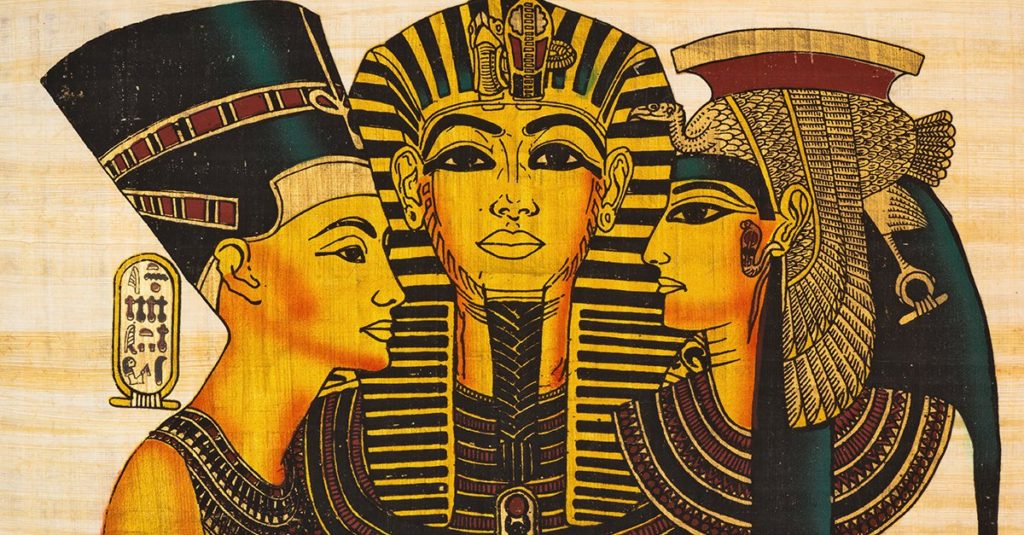Table of Contents
POETRY
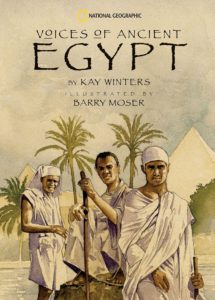
|
By Kay Winters, Voices of Ancient Egypt (National Geographic Children’s Books, 2009) is an illustrated collection of poems in the voices of 13 different everyday ancient Egyptians, among them a birdnetter, a marshman, a farmer, a weaver, and a dancer. (There’s nice potential for a writing project here.) For ages 9-12. |
PYRAMIDS
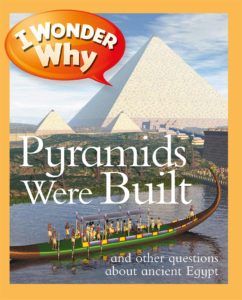
|
Philip Steele’s I Wonder Why Pyramids Were Built (Kingfisher, 2011) is written in a question-and-answer format that makes for a fun interactive read. As well as why were pyramids built, readers find out why paper is called paper, why women wore cones on their heads, and what Egyptians called cats. And more. For ages 7-11. |
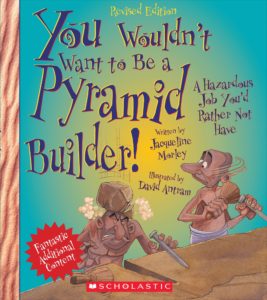
|
Jacqueline Morley’s You Wouldn’t Want to Be a Pyramid Builder (Franklin Watts, 2013) – one of the extensive You Wouldn’t Want to Be series – describes the lives of the pyramid builders with a humorous (but informational) twist. For ages 8-11.
In the same format, see You Wouldn’t Want to Be an Egyptian Mummy! (David Stewart, 2012), You Wouldn’t Want to Be Cleopatra! (Jim Pipe, 2017), and You Wouldn’t Want to Be Tutankhamen! (David Stewart, 2017). |
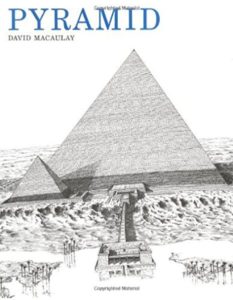
|
David Macaulay’s award-winning Pyramid (Houghton Mifflin Harcourt, 1982) is a masterful account of the building of a pyramid, illustrated with wonderful detailed black-and-white drawings. A sure hit with future engineers. For ages 9 and up. Also see Pyramid on YouTube. |
| Edsitement’s Egypt’s Pyramids: Monuments with a Message is a three-part lesson plan (Messages in Stone, Scale of the Structures, and That’s an Artifact?) with links to relevant images from museums and photographs of monuments and printable student worksheets. | |
| From TeachEngineering, Evolutionary Engineering: Simple Machines – Pyramids to Skyscrapers teaches kids about six simple machines in the context of building a pyramid. Twelve days of activities. |
HIEROGLYPHS
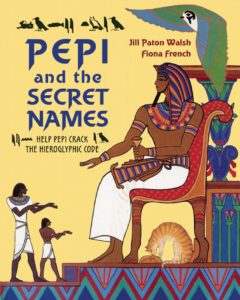
|
In Jill Paton Walsh’s richly illustrated Pepi and the Secret Names (Frances Lincoln Children’s Books, 2009), Pepi – by virtue of his knowledge of the secret names of animals – helps his father, a painter, decorate the walls of the pharaoh’s tomb. Included is a hieroglyphic chart (write your own messages in hieroglyphs). For ages 6-9. |
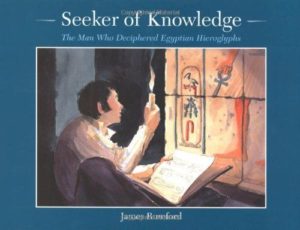
|
James Rumford’s Seeker of Knowledge: The Man Who Deciphered Egyptian Hieroglyphs (Houghton Mifflin Harcourt, 2003) is a picture-book biography of Jean-Francois Champollion, illustrated with lovely watercolor paintings. The margins are peppered with hieroglyphs and their explanations. (“There is a sharp-eyed ibis bird in the word ‘discover.’”) For ages 7-10. |
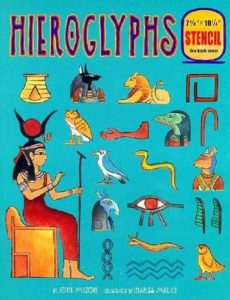
|
Joyce Milton’s Hieroglyphs (Grosset & Dunlap, 2000) is a colorfully illustrated introduction with included hieroglyph alphabet chart and stencil. For ages 7-11. |
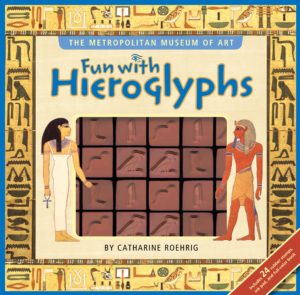
|
From the Metropolitan Museum of Art, Catharine Roehrig’s Fun with Hieroglyphs (Simon & Schuster Books for Young Readers, 2008) has an explanatory booklet and 24 hieroglyphic stamps (plus ink pad) for creating your own ancient Egyptian messages. For ages 7 and up. |
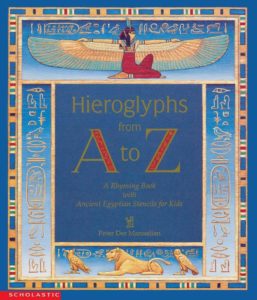
|
Peter Der Manuelian’s Hieroglyphs from A to Z (Pomegranate, 2010) is a rhyming introduction to Egyptian hieroglyphs with an included stencil. For ages 8 and up. |
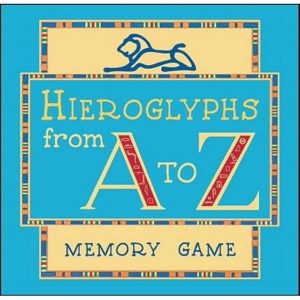
|
To accompany the book, see the Hieroglyphs from A to Z Memory Game, in which players match 26 pairs of cards (one an English letter picture card – “L is for Lion” – the other its equivalent hieroglyph). For ages 3 and up. |
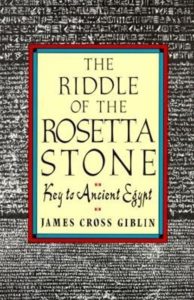
|
James Cross Giblin’s award-winning The Riddle of the Rosetta Stone (HarperCollins, 1993) is a fascinating and reader-friendly account of the famous Stone, its discovery, translation, and importance. For ages 9-12.
Also by Giblin, see Secrets of the Sphinx (Scholastic, 2004), the story of the 4500-year-old Sphinx, one of the largest sculptures in the world. |
| From Arty Factory, Ancient Egyptian Hieroglyphs has a bright-colored hieroglyphic alphabet, a make-your-own cartouche project, and interactive quizzes on Egyptian gods, hieroglyphs, and crowns. | |
| The Hieroglyphic Alphabet is a printable alphabet with pronunciation guide and simple black-line drawings. | |
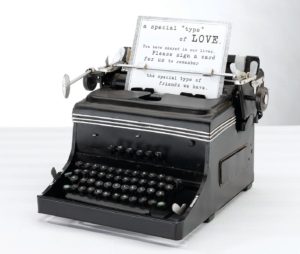 |
Try a Hieroglyphic Typewriter. |
